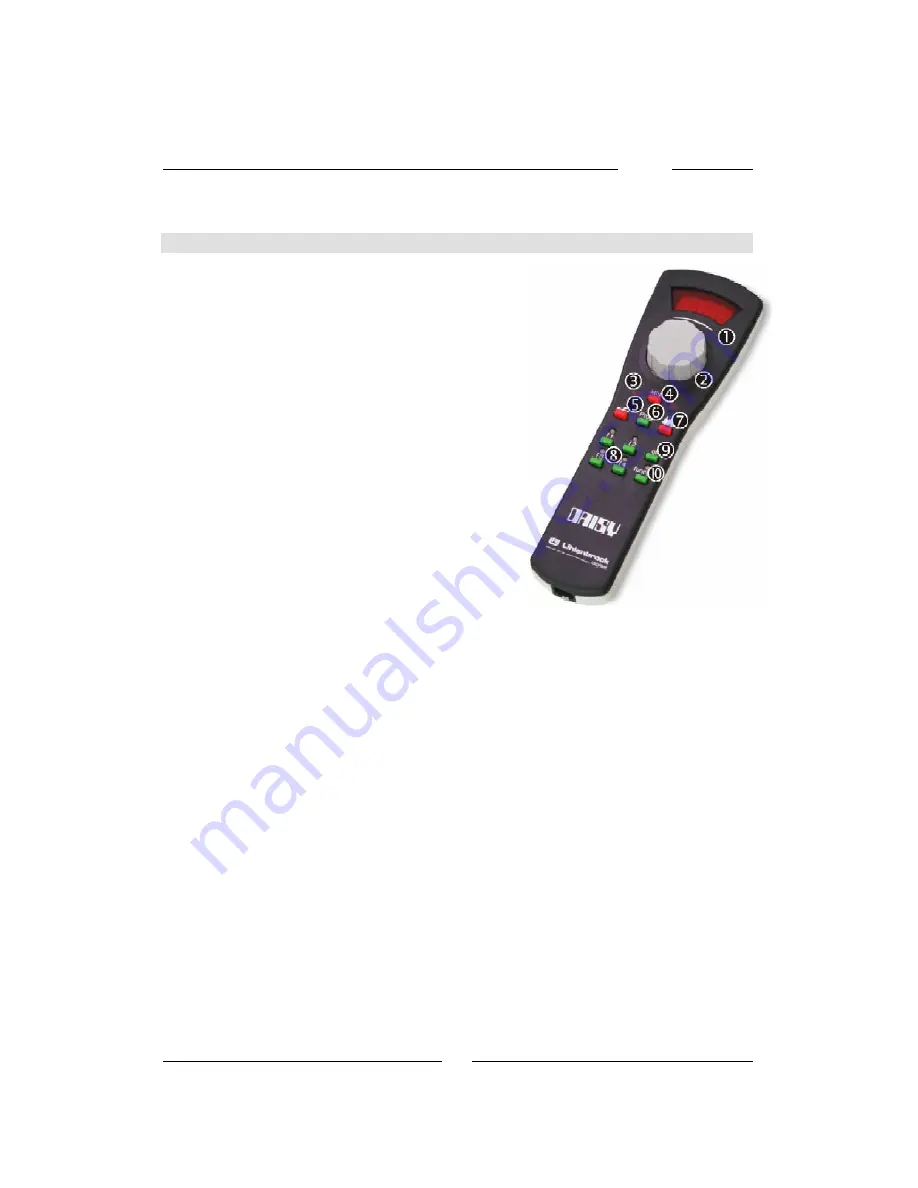
DAISY
18
3.1 Operation
(1) Large 4-digit display for showing all system
information
(2) Rotary encoder used as a speed knob for
controlling the loco speed and also for loco
(electric circuit) selection, turnout address
selection and for value/parameter input
during throttle configuration
(3) Driving direction indicators (triangular LEDs)
(4) [Stop]: layout Power Off/On toggle
(5) Turnout key for activating turnout
mode and for turnout/signal ad-
dress selection
(6) Programming key for per-
forming DCC programming
procedures and for the setup
of DAISY operational para-
meters (Special Options)
(7) Locomotive key for drive
mode selection and for loco-
motive (address) selection
(8) Function keys [f1] through [f4]. These keys control locomotive
features in drive mode, while they control turnouts in turnout mode
(9) [Off]
key:
ends
circuit-coupling
(10) [function] key: starts circuit-coupling
Speed knob
The speed knob can be used for controlling the locomotive speed.
Turning the speed knob clockwise increases locomotive speed, while
turning the speed dial counterclockwise decreases locomotive speed. If
the locomotive is stopped or if it has already reached its maximum
speed, further rotations in the corresponding direction are ignored.
If you select a locomotive which is moving, the throttle automatically
displays the locomotive speed and let’s you control the locomotive
starting from that speed – the same applies, of course, for all
locomotive functions (e.g., the locomotive lights, functions, etc.).
Driving direction
The locomotive driving direction can be changed by pressing the speed
dial. The current driving direction (that is: the track polarity) is shown by
the two triangular LEDs next to the [Stop] key. The LED pointing to the
right lights up if the loco driving direction is “forward”.
If the loco direction is changed by pressing the speed dial, the
locomotive first stops, then changes its driving direction.
Summary of Contents for DAISY
Page 1: ......
Page 25: ...DAISY 25 Power 2...















































